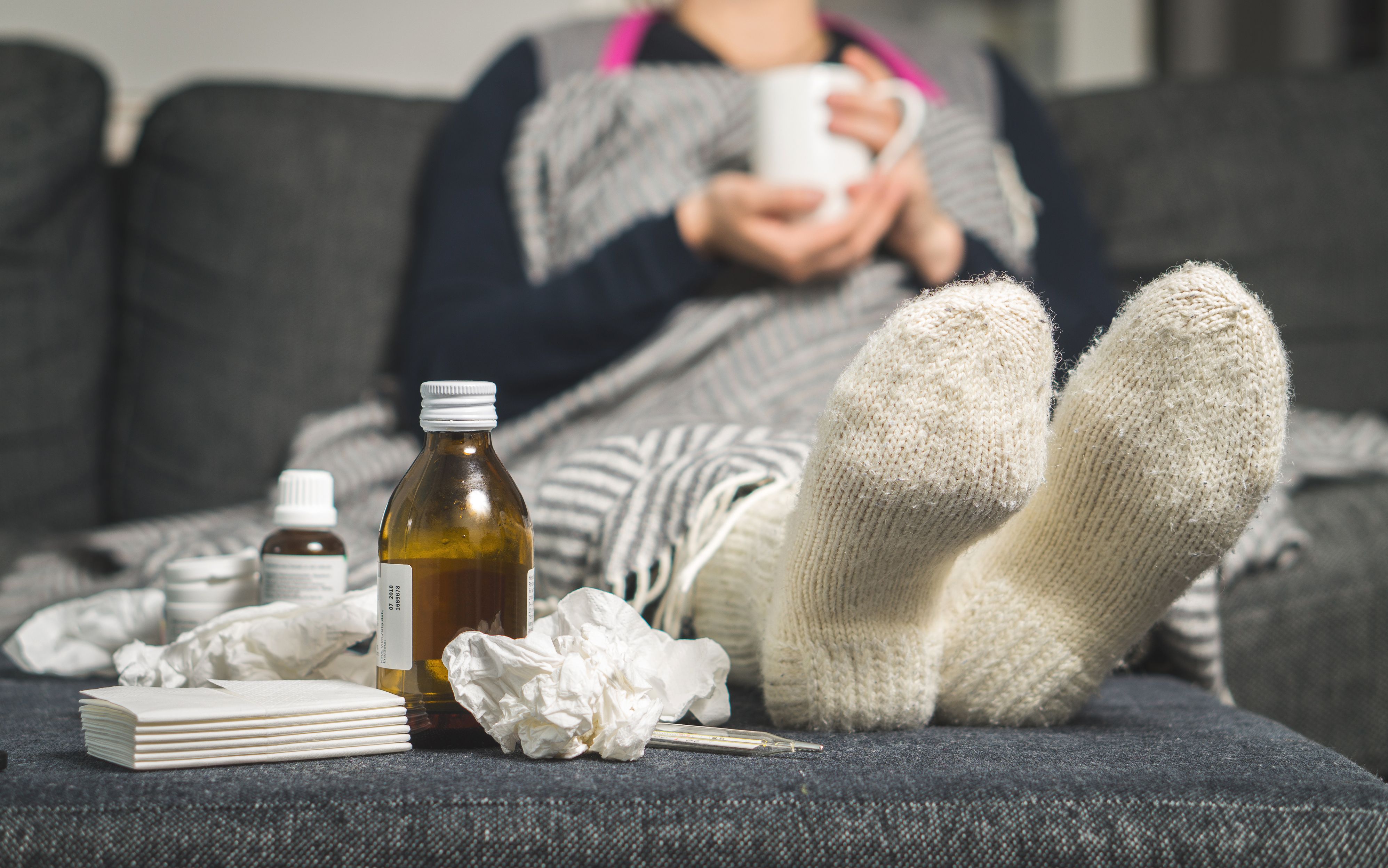This Is Why Sweating Makes You Feel So Much Better When You Have A Cold
Sometimes when you’re all stuffed up and surrounded by a pile of tissues, you have a strange desire to hit the sauna or let a warm shower rain down on you. Something about the heat, steam, and sweat ends up making your sniffles chill out and your mind and body feel at ease.
You might even be so inclined to get up and go for a short run, or power through a quick weights session. Much of the time, despite not being able to breathe through your nose, you do walk out of the gym thinking, I feel a little better now that I sweat it out.
But wait a minute, does the whole “sweating out a cold” idea have any real merit to it—and is it even safe to do? Here, experts chime in on why the act of sweating can make you feel as if you’re on the mend—and whether or not it can truly help you feel better faster.
There are a few reasons why sweating can feel so good when you’re under the weather.
It’s not all in your head: Even when you’re ill, working out can be a serious pick-me-up, thanks to the release of feel-good endorphins you get during physical activity, explains Leeja Carter, PhD, an assistant professor of sport and exercise psychology at Long Island University in Brooklyn and an E-Board member of the Association for Applied Sport Psychology. This flood of endorphins can improve both the way you see your body and yourself and improve your mood—all positive effects that you’re likely in need of on those days you feel less than stellar.

If you spend time in a steam room or hot shower (maybe with some eucalyptus?), you might also clear up congestion in the short term, as humid air helps clear mucus from your nasal passageway, says Frank Esper, MD, an infectious disease specialist at Cleveland Clinic Children’s in Ohio. But don’t get too excited, because as soon as you step out, secretions caused by your virus will start to build up again, he notes.
But does sweating when you have a cold actually shorten the length of your sickness? Not quite.
Fun fact: Some early studies suggested that because rhinovirus—the virus that’s likely behind your common cold—thrives at about 90 degrees Fahrenheit, turning up your temperature even more than that could keep the virus from growing by degrading its RNA (the building blocks of viruses). But unfortunately, the science hasn’t held up. For instance, a review in the Cochrane Database of Systematic Reviews looked at six studies involving sick people and found that breathing in hot air (like in a steam room) didn’t have any virus-erasing benefits.
You can’t sweat out a cold, says Michele Olson, PhD, CSCS, a senior clinical professor of sport science at Huntingdon College in Montgomery, Alabama. That’s because sweat serves a pretty simple basic function: “When sweat evaporates off your skin, your body cools. It is the primary way we reduce body temperature,” she explains.
So sweat can protect you from heat exhaustion, heat stroke, and even a super high fever (when you’re sick, heat loss via sweat keeps your fever from growing out of control). But it doesn’t exactly leach out cold bugs.
Oh, and ignore the influencers waxing poetic about toxins and sweat lodges, too: There are few, if any, toxins in your sweat, Olson says.
Even if it won’t speed recovery, it’s okay to sweat if your cold is mild.
While caution is key (and there’s nothing wrong with taking a week off if you’re not feeling it!), you can do a workout if you give yourself a mini checkup first. “If most of your symptoms are above the neck (sniffling nose, sneezing, sore throat, and no fever), you can exercise within reason,” says Olson.
Her suggestion: Stick to your regular exercise routine but take it down a notch (work at 50 to 70 percent of your typical effort), she advises. Think: steady-state cardio like a slow run, flow yoga or Pilates, or lifting light weights with high reps.

Straight-up feverish with symptoms down to your chest, like severe coughing and wheezing? Get back on the couch until your fever’s down and your chest is no longer congested, she says. Otherwise, you could end up putting yourself at risk for conditions such as bronchitis or pneumonia, says Olson. Also, if you notice any brown mucus, you might have a sinus infection, in which case you’d want to head to the doc for a solid diagnosis and antibiotics, she notes.
As for the steam room, so long as you’re healthy (read: no history of heart problems), you’re good to step in for 20 minutes or so. Just be sure to drink tons of water to avoid dehydration, advises Olson.
Just make sure you consider the health of everybody else. While using a sauna mid-cold hasn’t been proven to increase the spread of infection, you’re still entering a small, enclosed space for prolonged contact with other people, says Dr. Esper. The same goes for touching all sorts of workout equipment if you exercise at a public gym. Do everyone a public service by staying away when you’re sick. (Your personal shower is a good, steamy substitution.)
The bottom line: Sweating out a cold is pretty much impossible, experts say, but breathing in steam or doing a light workout probably won’t hurt and may even help ease your congestion for the short term.
Source: Read Full Article



